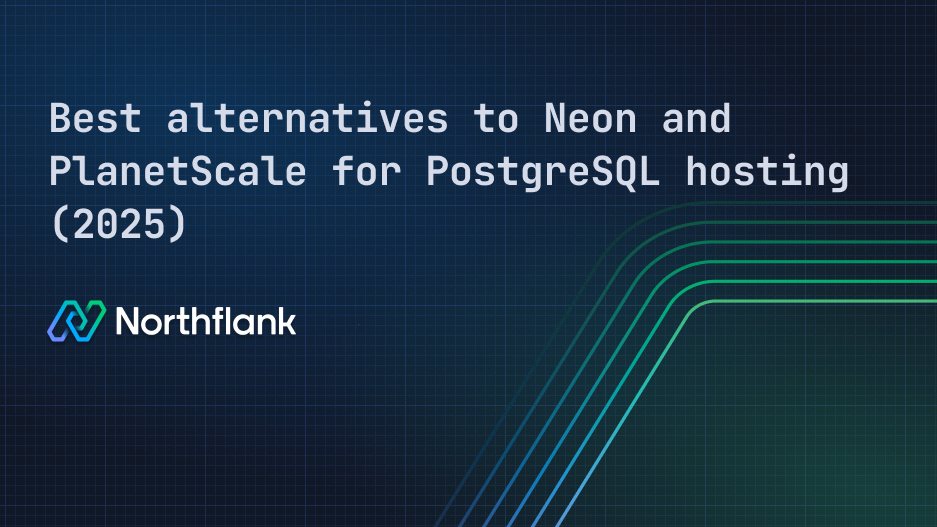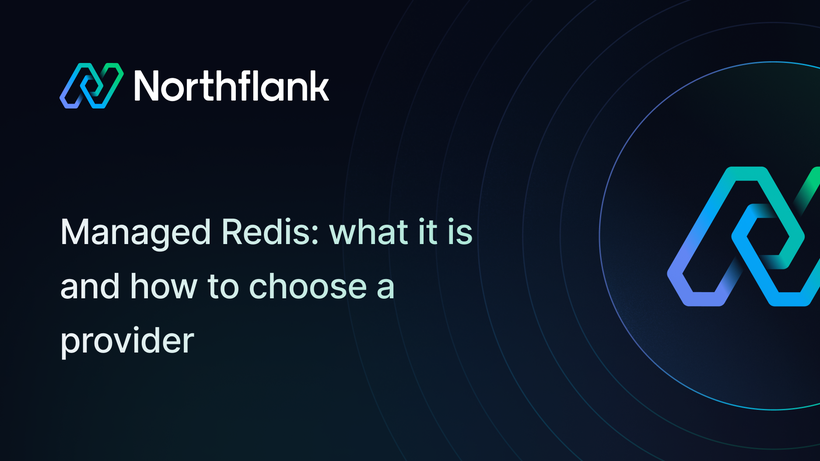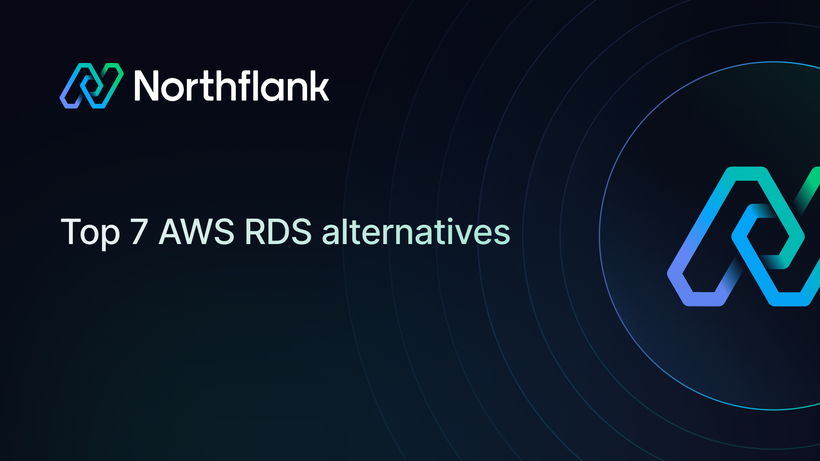

Best alternatives to Neon and PlanetScale for PostgreSQL hosting (2025)
Neon was recently acquired by Databricks, a move that signals how important PostgreSQL has become for modern applications and AI infrastructure. The day after the acquisition was announced, Neon experienced another outage, raising questions among teams about production readiness and long-term reliability.
At the same time, PlanetScale, known for its managed MySQL platform, introduced support for PostgreSQL. It’s a natural step as more developers adopt Postgres for its compatibility, extensibility, and proven track record across SaaS, analytics, and AI workloads.
However, both platforms are focused on databases alone. And in real-world production environments, developers need more than a database. You often need to deploy applications, connect caches, run background jobs, expose APIs, and manage all of these tasks together as part of a single workflow.
PostgreSQL remains a go-to choice for teams that want predictable performance and flexibility, regardless of if they’re running locally in Docker or scaling across Kubernetes. This article breaks down the top alternatives to Neon and PlanetScale for hosting PostgreSQL, with a focus on teams that care about uptime, control, and supporting full-stack workloads.
If you're short on time, here’s a quick overview of platforms that support production-ready PostgreSQL hosting with different levels of control and flexibility:
- Northflank – Native Postgres with high availability, backups, logs, and metrics. Deploy to your own cloud (BYOC) or use managed infrastructure. Supports Redis, job runners, APIs, and full-stack app deployment.
- DigitalOcean Managed PostgreSQL – Affordable managed Postgres with automated backups and high availability. Hosted on DigitalOcean only, with limited observability.
- Render – Lightweight managed Postgres with app hosting and preview environments. Best for smaller workloads and simple app architectures.
- Supabase – Postgres bundled with real-time features, auth, and APIs. Ideal for MVPs and small SaaS apps. Limited infrastructure control.
- Aiven – Enterprise-grade Postgres across multiple clouds with private networking, access controls, and compliance features. Infrastructure-focused.
- Heroku Postgres – Developer-friendly Postgres with easy Heroku integration. Simple to start with, but limited flexibility and costly at scale.
Northflank gives you Postgres that runs in your own VPC or on managed infrastructure, with support for everything else your app needs, from Redis and workers to APIs and CI/CD pipelines.
Deploy PostgreSQL with full-stack flexibility → Try Northflank
Neon introduced a modern architecture by separating storage and compute, aiming to optimize Postgres for cloud-native workloads. It’s an ambitious approach that has gained traction, particularly among AI app builders and early adopters. However, teams running production systems continue to weigh this design against the platform’s history of outages and growing pains. For production use, reliability often takes priority over architectural experimentation.
PlanetScale, on the other hand, has built a well-regarded reputation for managed MySQL using Vitess. Its recent move to support PostgreSQL reflects growing demand from teams who rely on Postgres for compatibility and extensibility. However, PlanetScale’s PostgreSQL implementation also runs on Vitess, which introduces differences from running native Postgres directly. For some teams, that added abstraction can be a limitation, particularly when working with extensions or aiming for consistent local-to-prod behavior.
Both platforms are focused on managed databases. However, many production teams also need Redis, job schedulers, background workers, APIs, and secure app environments that work together with their database. They’re looking for solutions that support more of the stack, integrate into their cloud environments, and don’t introduce unnecessary complexity when scaling.
Teams choosing where to run PostgreSQL in production are usually weighing more than performance benchmarks or a simplified setup. Reliability, transparency, and flexibility all influence how well a database solution fits into real-world workflows.
For many teams, including those deploying AI applications, internal platforms, or SaaS products, Postgres needs to integrate cleanly into the environments they already operate in. Regardless of if it's Docker on a laptop, a Kubernetes cluster, or a VPC in AWS, the behavior should remain consistent and predictable.
These are the factors modern teams often prioritize when selecting a PostgreSQL hosting platform:
- Native Postgres: No rewrites, no proprietary query layers, and full compatibility with extensions and local development.
- Bring Your Own Cloud (BYOC): The ability to deploy databases inside your own VPC on AWS, GCP, or Azure, without giving up ease of use.
- High availability: Zonal redundancy, failover handling, and minimal downtime during upgrades or restarts.
- Built-in observability: Access to logs, metrics, usage breakdowns, and operational visibility without relying on external tools.
- Security and compliance support: Role-based access control (RBAC), audit logs, and readiness for SOC 2 or GDPR-focused teams.
- Environment consistency: PostgreSQL should behave the same in development, staging, and production, regardless of where it's running.
- Support for full-stack deployments: Some platforms stop at the database, but many teams also need Redis, background jobs, APIs, and app runtimes deployed alongside it.
There’s no shortage of platforms offering managed PostgreSQL, but the best alternatives to Neon and PlanetScale tend to prioritize stability, full-stack compatibility, and deployment flexibility across cloud environments.
Northflank provides managed PostgreSQL that can be deployed in under 60 seconds on its platform or in around 30 minutes within your own cloud using Bring Your Own Cloud (BYOC) features. It’s designed to work across AWS, GCP, and Azure with predictable behavior across environments.

You can host more than just databases because Northflank supports Redis, job runners, web services, and full CI/CD pipelines in one place. PostgreSQL clusters come with high availability, scheduled backups, automated restores, and upgrade workflows.
Teams can also create preview environments for every branch, replicating services and databases to support faster testing and reviews, without needing to manage separate infrastructure.
Security and control are built in: role-based access control (RBAC), audit logs, cost tracking, and secure multi-tenancy are all available by default. Northflank’s Kubernetes-native secure runtime is built to support untrusted code and multi-user environments safely.
💡Choose Northflank if you want high-availability Postgres, full-stack support (Redis, APIs, CI/CD), and the flexibility to deploy in your cloud or on managed infrastructure.
DigitalOcean’s Managed PostgreSQL provides an easy way to deploy Postgres with built-in high availability, daily backups, and automated failover. It’s designed for developers who want to get up and running quickly without managing the underlying infrastructure.

The service is tightly integrated with DigitalOcean’s compute, networking, and storage products, making it a natural fit if your workloads are already hosted on the platform. However, it doesn’t support Bring Your Own Cloud (BYOC), private VPCs outside of DigitalOcean, or advanced runtime isolation. Access to logs and observability tools is also more limited compared to platforms built for larger or regulated teams.
Choose this if you're already building on DigitalOcean and need a straightforward way to run managed PostgreSQL without extra setup.
💡If you're evaluating DigitalOcean for more than databases, these articles might help:
Render offers managed PostgreSQL as part of its broader platform-as-a-service, making it easy to spin up databases alongside web services, background workers, cron jobs, and static sites. It’s designed for developers who want to deploy full-stack applications without managing infrastructure directly.

Postgres instances on Render include daily backups, persistent storage, and database access controls. That said, it doesn’t support Bring Your Own Cloud (BYOC), and there’s limited control over networking, custom scaling strategies, or advanced database configurations. Observability and metrics are more basic compared to infrastructure-first platforms.
Choose this if you're deploying simple apps and want PostgreSQL integrated into a streamlined PaaS workflow.
💡If you're comparing Render with other platforms, these guides might help:
Supabase is an open-source platform that provides managed PostgreSQL with built-in authentication, storage, real-time subscriptions, and REST and GraphQL APIs. It’s often described as an open-source Firebase alternative and is well-suited for building MVPs, side projects, and small SaaS applications.

Supabase handles a lot out of the box, allowing developers to move quickly without needing to combine multiple services. However, it doesn’t support Bring Your Own Cloud (BYOC), and infrastructure-level configuration is limited. Teams looking for more fine-grained control over networking, scaling, or compliance tooling may find it less suited for production at scale.
Choose this if you're building an MVP or early-stage product and want to move fast with built-in tools and minimal setup.
💡You can also deploy Supabase on Northflank if you want more control over your own Supabase instance, with support for BYOC and integrated full-stack services.
Aiven provides fully managed PostgreSQL with support for major cloud providers including AWS, GCP, and Azure. It’s designed for infrastructure teams that need flexibility, control, and operational features across different cloud environments.

Aiven supports private networking options like VPC peering and PrivateLink, role-based access control, and advanced observability through integrations with monitoring tools like Prometheus and Grafana. It also offers multi-region replication and automated backups.
Unlike platform-as-a-service tools, Aiven doesn’t include app hosting, job runners, or CI/CD tooling; its focus is strictly on managing infrastructure components, such as Postgres, Kafka, Redis, and OpenSearch.
Choose this if you need managed PostgreSQL with enterprise-grade networking and compliance features across multiple cloud providers.
Heroku Postgres has long been a go-to choice for developers looking to get started quickly with managed databases. It integrates seamlessly with Heroku apps, supports multiple Postgres versions, and includes features like automated backups, point-in-time recovery, and follower databases for read replicas.

However, as applications grow, teams often find that Heroku Postgres becomes more expensive and restrictive. There’s no support for Bring Your Own Cloud (BYOC), VPC-level networking, or in-depth observability. Access to logs and performance insights is limited compared to newer platforms focused on production scale and compliance.
Choose this if you're already using Heroku and want minimal setup, but expect to migrate later as your infrastructure needs grow.
💡If you’re looking for alternatives to Heroku, checking how it compares to other platforms, wondering about the capabilities, limitations, and alternatives of Heroku Enterprise, or looking for a resource on Heroku pricing comparison and reduction, or looking for how to migrate from Heroku, these guides would help:
- Top Heroku alternatives in 2025
- Render vs Heroku: Which platform-as-a-service is right for you in 2025?
- Vercel vs Heroku: Which platform fits your workflow best?
- Heroku Enterprise: capabilities, limitations, and alternatives
- Heroku Pricing Comparison & Reduction
- Heroku outages are getting worse. The best alternative in 2025 with no downtime.
- Migrate from Heroku
Northflank runs tens of thousands of production databases across Postgres, MySQL, and Redis for teams building SaaS apps, internal platforms, and AI services. Unlike platforms that stop at database hosting, Northflank is designed to support your entire stack, from your data layer to your application services.
You can deploy and manage:
- Databases: Postgres, MySQL, Redis
- Workloads: APIs, scheduled jobs, background workers
- AI infrastructure: model fine-tuning, notebooks, vector DBs
- Environment automation: fast preview environments with cloned services and data
Everything is backed by enterprise-grade features like role-based access control (RBAC), audit logs, and cost attribution by project. You can run in your own cloud or on Northflank’s infrastructure. Either way, setup is fast, and the experience is consistent across development, staging, and production.
Try Northflank for PostgreSQL hosting
Not sure what to do next after signing up? You’ll be guided through creating your first project, database, or full-stack app.

